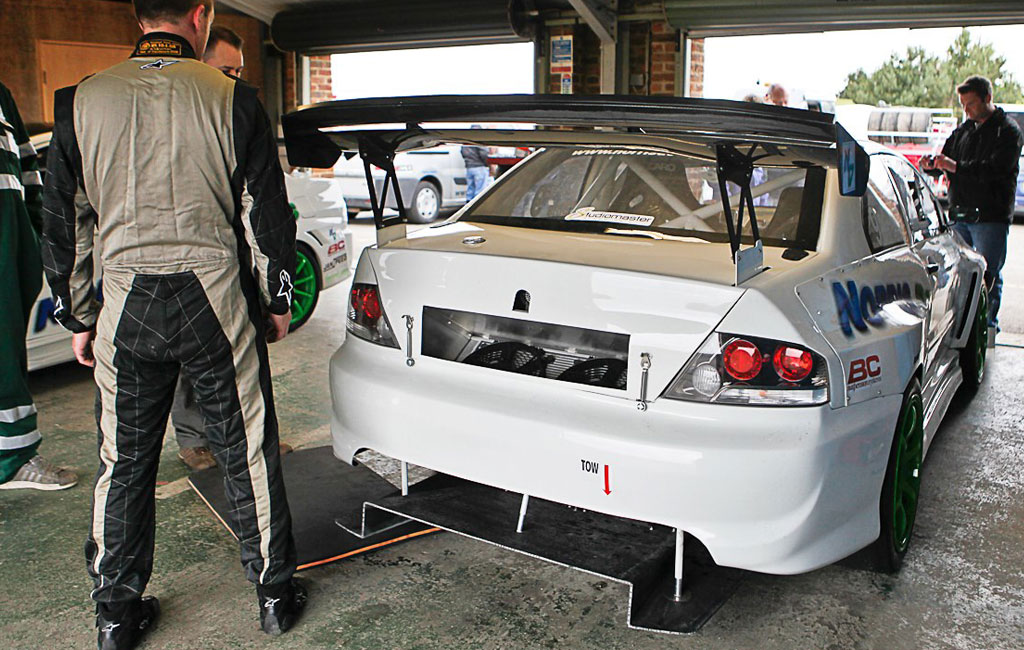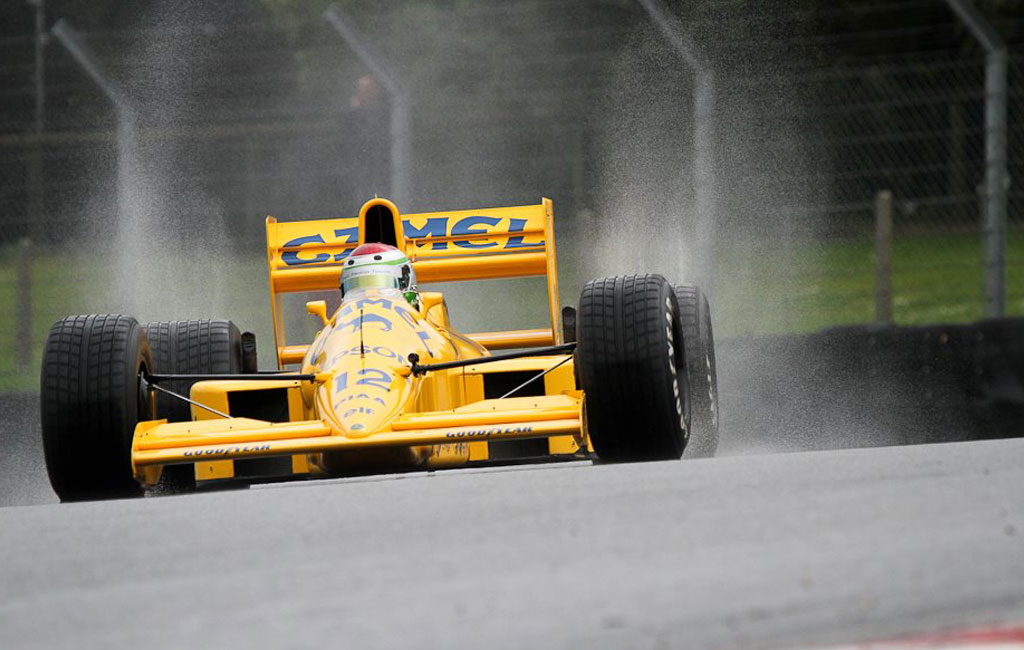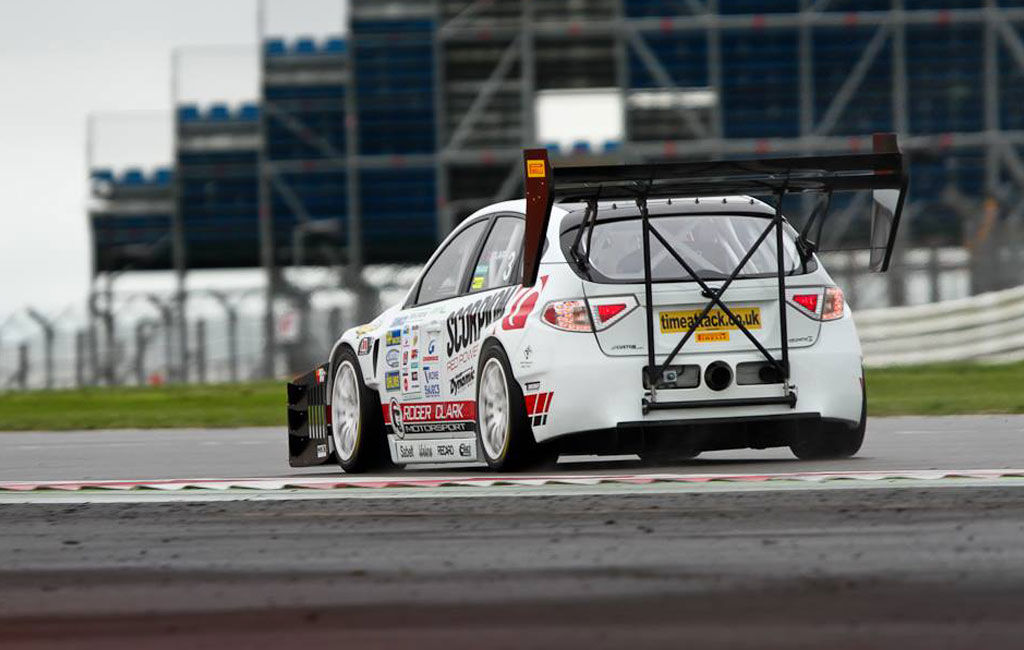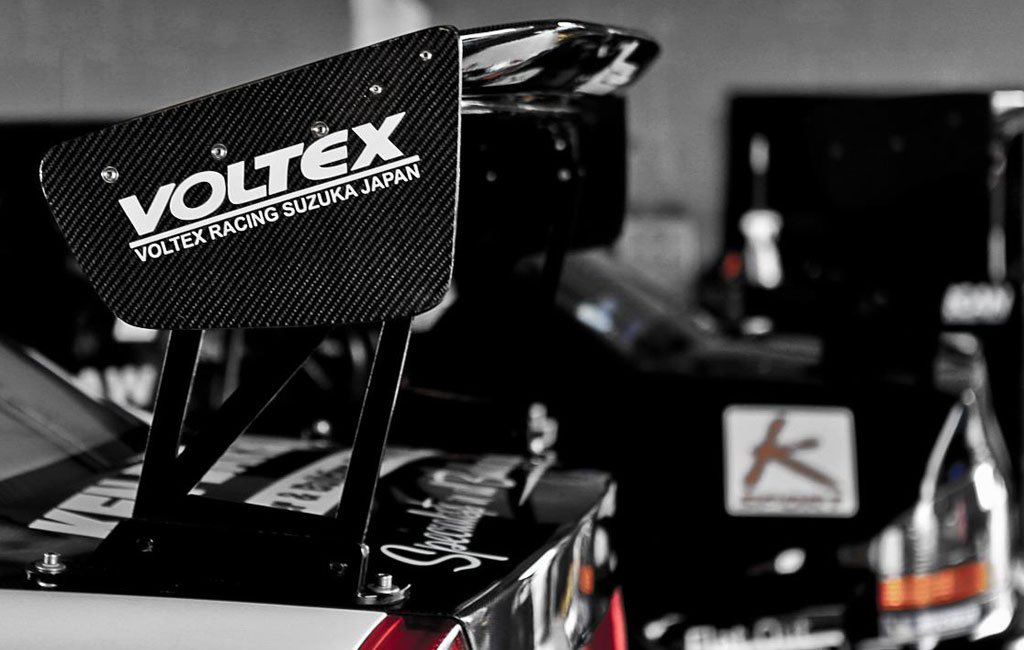Fast Car Magazine’s Aero For Beginners
In the first of a six part series of collaboration articles with Time Attack, Fast Car Magazine’s first installment covers the basics of aero for beginners and what it means on a car:
Aero is either a simple subject about body styling, or an incredibly complex scientific affair about using airflow to make your car perform to its maximum abilities. So over the course of this two-part feature, we’ll aim to cover both aspects without confusing the hell out of all of us!
So, what is Aero?
Until around ten years ago, a body kit was just a body kit in the modified car scene – you simply fitted it to your car because it looked cool, and that was that. These days however, thanks to the popularity of things such as Time Attack not to mention the Japanese import revolution – things are very different, and aero is now the common term for body mods that create (or at least look like they create), an aerodynamic performance advantage.
While the vast majority of people fit aero to road cars purely as it looks cool, when done correctly, it really does have an effect when a car is pushed to the limits. Straight line speed, cornering speed, braking, cooling, and engine efficiency can all be improved by clever aero design.
Aerodynamics… What it’s all about?
While it’s common to associate the word aerodynamics with how easily something will fly through the air (a dart is more aerodynamic than a brick wall for example) aerodynamics, or aero, involves far more than that. It covers every aspect of airflow associated with a car, and can have a massive effect on performance, stability, and safety. Not only is it about how the car will cut through the air when screaming down the tarmac, but it’s about drag, downforce, lift, flow in, and out of various holes on the car – even how air is channelled over the body by certain aero parts.
Providing you’re not drifting (or about to have a crash) the front of your car will always be facing the direction of travel. So the air that it hits has to go somewhere, either over it, under it, around the sides of it, or through holes in the front end of the car. And this is what aerodynamics is all about – it’s the science of how much of this air goes where – from this first point on the front bumper until the very rear of the car.
The main thing to remember, before we get started, is that the effects of aerodynamics increase with speed. So at what speed it becomes effective, really depends on how extreme the aero is. Some vehicles, such as rally cars, have aero that can be effective at a little over 30mph, but this setup won’t be very good for high speed use, as it would cause huge drag above 100mph. Most circuit race car aero, on the other hand, has very little effect under around 60mph or more – but won’t cause anywhere near as much drag at higher speed. This enables the cars to hit the high speeds needed to be competitive. So at the end of the day, it’s a balancing act, dependant on what you need from a car.
Drag
Aerodynamic drag refers to how easily your car cuts through the air. The less drag you have (if all else is equal) the faster your car should accelerate, the better the fuel economy should be, and providing you have the gearing for it, the higher potential top speed you will have too. About 1/3 of the air that hits the front of your car tends to go underneath, including around the wheels, exhaust, transmission, and so on. About 1/3 goes around the bodywork, and the final third tends to go through the openings in the grille and bumper and into the engine bay. Because of this, cars that are intended to have high top speeds, such as supercars tend to have very aerodynamic body shapes and smooth undersides to reduce drag. Even ‘eco’ cars such as certain hybrids and VW Bluemotions have aero parts like very small front grille and bumper openings to reduce drag with the aim of improving fuel economy.
Down force
Down force is exactly the opposite of lift. It is air pressure – literally pushing the car, and therefore the tyres – into the tarmac. If the car is pushed towards the surface by the air, straight line and cornering grip is increased, and the potential improvements from this are absolutely incredible – as shown by Formula 1 and Le Man Prototypes for example.
Unfortunately, the majority of things that increase down force also increase drag, so it’s a real balancing act to create the required amount of down force, without so much drag that the car’s top speed is too limited.
Lift
Lift is exactly what it sounds like – airflow that tries to lift the car from the ground – really not what you want for performance. Lift is affected (mostly) by the amount of air travelling underneath the car, and how quickly it can escape. The more air under the car (and longer it is under there) the worse lift tends to be. Airflow above the car affects lift too, as while long smooth bodywork has less drag, it also tends to increase lift too. Lift reduces tyre grip, and, in extreme instances, can send the car almost totally out of control. Race cars have even been known to lift their front wheels and even flip over, due to extreme levels of lift. Here is a video of Peter Dumbreck’s famous car flipping incident at LeMans when the car lifted off the road :
Cooling airflow
This is airflow, which, while not directly related to the car’s handling, almost always creates drag and lift at the same time. Cooling airflow does exactly what it says it does, it’s the air needed to hit your radiators, oil coolers, and intercoolers, to prevent your engine from overheating and to create maximum power. While every car’s aerodynamics would be better if there was no need for cooling holes and ducts, they are unfortunately vital for performance.
Stability airflow
Unlike other aero changes, which tend to have side-effects, aero that affects straight line stability tends to have very little difference in drag, lift, or downforce. This is the least common aero mod both on road and race cars, but it does exist. It’s used to improve straight line stability at high speed, and reduce the chances of lift if a car does go sideways – some race cars have been known to lift up and flip over if they go sideways at high speed!
Aero Styles
Berg Cup
This style of aero is based around European hillclimb racers, often called Berg Cup-style after the German hillclimb event of the same name. Berg Cup cars tend to be ’70s, ’80s, and ’90s hot hatches and coupes, They had massive bolt-on wheel arches to house the mega wide wheels and tyres, huge ground hugging front splitters and skirts, and an equally wild rear end with massive rear wing and diffuser. As top speeds on events like these rarely top 100mph, but sustaining a high speed is the key to success, it’s all about maximum down force at the expense of drag. This is one of those styles that non-car fans think looks ridiculous, as they don’t understand why a car like an ’80s VW Polo will need a massive spoiler and huge arches, but to us modified car fans, Berg Cup cars look nothing but awesome.
Rally
While you won’t see ground hugging skirts and splitters on a rally car due to the rough surfaces and massive punishment they take on every stage, wide arches, big rear wings, and huge ducts, vents, and bumper openings for maximum engine airflow are the order of the day. Rally look is one of the easiest to get on a road car purely as so many road cars that we all own have dedicated rally versions to take inspiration from. Levels of drag is usually quite high as rally cars rarely top 110mph, but it’s a good all-round compromise, and actually the most practical on the road.
Track and Time Attack
Why crazy looking aero? Well, because race car! While there are no fixed rules for looks on a track or race car, and there’s a massive variety out there – large splitters, wings, canards, diffusers and vents are the norm. While drag is more of a concern with track use due to much higher top speed, you only have to look at Time Attack cars to see how wild the aero is on some cars; they simply fight against the drag by having massive levels of power!
Drift
While technically, well-thought out aerodynamics could improve a drift car’s handling, the vast majority of drift car aero is done for a mix of cooling and looks. Drifting is all about standing out from the crowd, so in essence, anything goes! Open front bumpers, vented bonnets, wide arches, ground-hugging bumpers and skirts, and huge wings are all the norm on a drift car – though with such open rules in drifting, the only limit is your imagination.
Nascar
With lap record (average) speeds of over 200mph, Nascar is all about minimum drag, minimum lift, and maximum speed. While there are no huge wings, wide arches, or complex aero such as canards or diffusers, ground-hugging front bumpers, ducktail-style rear wings, Gurney flaps, and roof rails are the order of the day. These cars are built to battle too, so no carbon or other flimsy looking parts are anywhere to be seen, it’s all metal and rivets for the Nascar look.
Pikes Peak
Pikes Peak is the most extreme hillclimb in the world, running around the edge of a mountain with the finish line over 14,000 feet above sea level. So, with a big ‘off’ leading to certain death, extreme aero and extreme down force is the order of the day. The look is a mix of Berg Cup, Rally, and Time Attack, but more extreme than all of them – with every single aero part used – and usually bigger than you can ever imagine. Pikes Peak bodykits are truly insane!
Aero Components
Front splitters
Front splitters tend to be large flat surfaces protruding forwards from the bottom of your front bumper. They’re designed to increase front down force by allowing air to push down on it and therefore pushing the whole front of the car downwards. They have a similar important secondary effect of preventing air that hits the front bumper from going underneath the car, decreasing lift.
As with most things that increase down force and decrease lift, front splitters increase drag too, but not by a huge amount, so the advantages far outweigh the disadvantages.
Overall, the further the front splitter protrudes forward, and the lower to the ground it sits, the more effective it is, but this causes issues in itself, especially on road cars. A big front splitter being forced downwards at speed by air pressure needs to be VERY securely mounted to prevent it from breaking off at speed. This can cause damage to the car and a serious accident in a worst case scenario! Even the usual bumper support braces are often not enough, and we’ve seen mounts ripped out of bumpers at high speed, or even bumpers pulled down and under the car! Most large front splitters on race cars are integrated to the undertray and usually firmly attached to the front chassis rails rather than simply to the front bumper.
The lower a splitter is, the more effective it’ll be. The trouble is, even on race cars running on super-smooth tracks with rock solid suspension, they’re commonly cracked due to hitting the ground. On a road car the problem is magnified by the poor bumpy roads and softer suspension, so for a road car a front splitter is often a compromise between what you actually want, and what you can live with.
Canards / Dive Planes
These are the cool looking winglets usually mounted just before the front wheel arches on hardcore track and race cars. Their main job (aside from looking awesome) is to increase down force and direct airflow upwards, reducing lift. As an aerodynamic aid, canards, due to their relative small size compared to other aero parts, have a fairly small effect. It’s doubtful you will ever see the difference on a road car, especially as full race car canards are absolutely huge, but they do look mean.
Gurney Flaps
These are the small (often only an inch tall or less) strips often fitted to bootlids or rear wings of cars. While most just fit them as a subtle aero mod, they actually are race proven bits of kit, and are named after the inventor, legendary racer, Dan Gurney. Gurney flaps are often made from simple, flat strips of metal and plastic, and are fitted to flat rear ends of cars to cancel out the lift effects. They do this without adding significant amounts of drag, and are also fitted to rear wings to add even more down force – so much so that when first invented it made the test car massively understeer at high speed, despite the powerful V8 engine powering the rear wheels.
Don’t automatically assume a little Gurney flap will transform your car’s rear end grip, but considering its tiny size, this little flap is proven to create a massive aero improvement.
Rear Spoilers
While large rear wings are used for increasing down force, rear spoilers tend to be mostly used to give the air a smooth exit from the rear of the car. This is to reduce lift and increase rear stability – without the need for a big wing (though many race cars will feature both). Just like wings, most people think spoilers are fitted purely for looks, but this really isn’t true, even on standard cars. Original Audi TTs, for example, came without a rear spoiler and were recalled by the factory to have them fitted after a number of high profile crashes. On a similar note, while a lot of cars do look really good with the rear spoiler removed, it really has an affect on high-speed stability and we’ve seen modified cars lose it during high speed runs for this reason.
The common theme of ‘bigger is better’ is an unusual one with spoilers, as a long flat spoiler extending past the rear end of the car like commonly fitted to drag monsters and ‘long tail’ LeMans racers is used to reduce drag and improve acceleration at high speed, but a super long spoiler like this will also increase lift and therefore reduce rear grip. On the other hand, a spoiler angled upwards will increase drag, blunting acceleration, but will reduce the issue of lift, giving better grip; as ever with aero, it’s a real balancing act.
Rear Wings
Before we start this section, the first thing to clarify is that rear wings and rear spoilers are different things. People often mistakenly refer to wings as spoilers, but lucky for you lot you can read all about spoilers in the next section…
A wing is the rear end equivalent of the front splitter. Its main job is to create down force, but this time for the rear end of the car. This down force increases rear stability and grip, and contrary to popular belief, is perfectly useful on a front-wheel drive car too – just because there’s no power to the rear wheels doesn’t mean the rear doesn’t need to grip!
A wing’s shape, positioning, and crucially, angle, play a big part in how well it works. The angle the spoiler sits at is always going to be a compromise between down force and drag – an extreme angled wing may give huge down force, but it will also cause so much drag it can severely limit top speed. This is why many supercars slightly retract their spoilers for maximum speed runs.
Some people claim that fitting rear wings doesn’t work on road cars. But while there’s no doubt serious wind tunnel testing is needed to make the most of any potential benefits, it’d be incorrect to say that a rear wing won’t work on a road car. The question is, though, is it possible to feel the difference on the road? In all honesty you could if it was designed right, but usually only at highly illegal speeds!
Finally, remember earlier in the feature we said about securing your front splitter? Well, the rear wing suffers the same problems, and we’ve seen them pushed down so hard they dent bootlids or are even ripped off the car. This is why race cars often have their wing attached solidly to the chassis or roll cage rather than to the bodywork.
This article was written by Stavros and kindly provided by Fast Car Magazine









